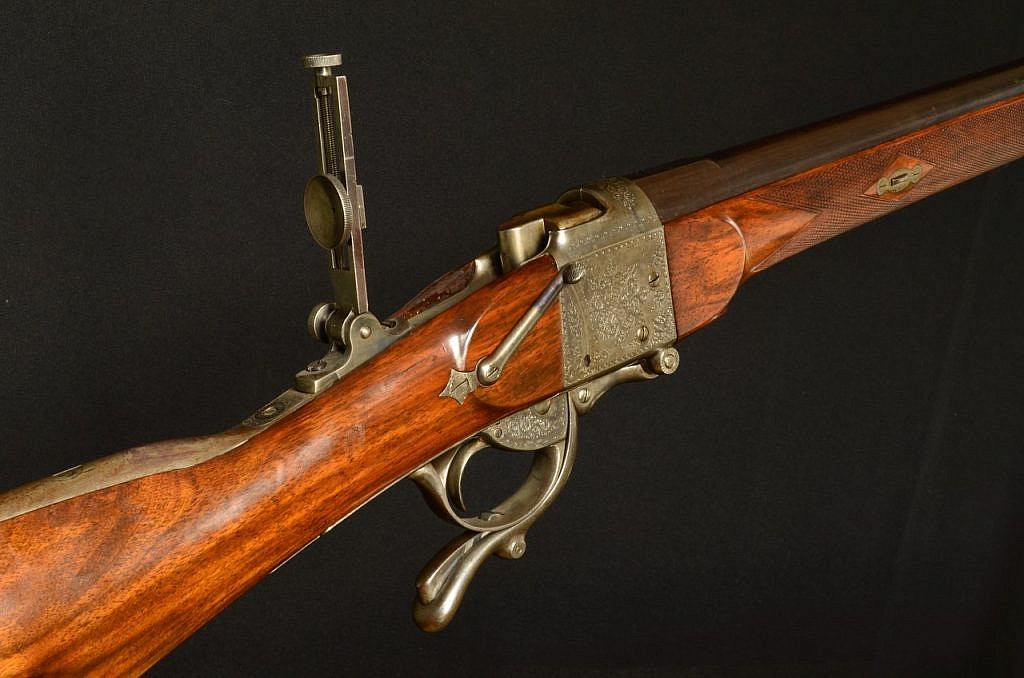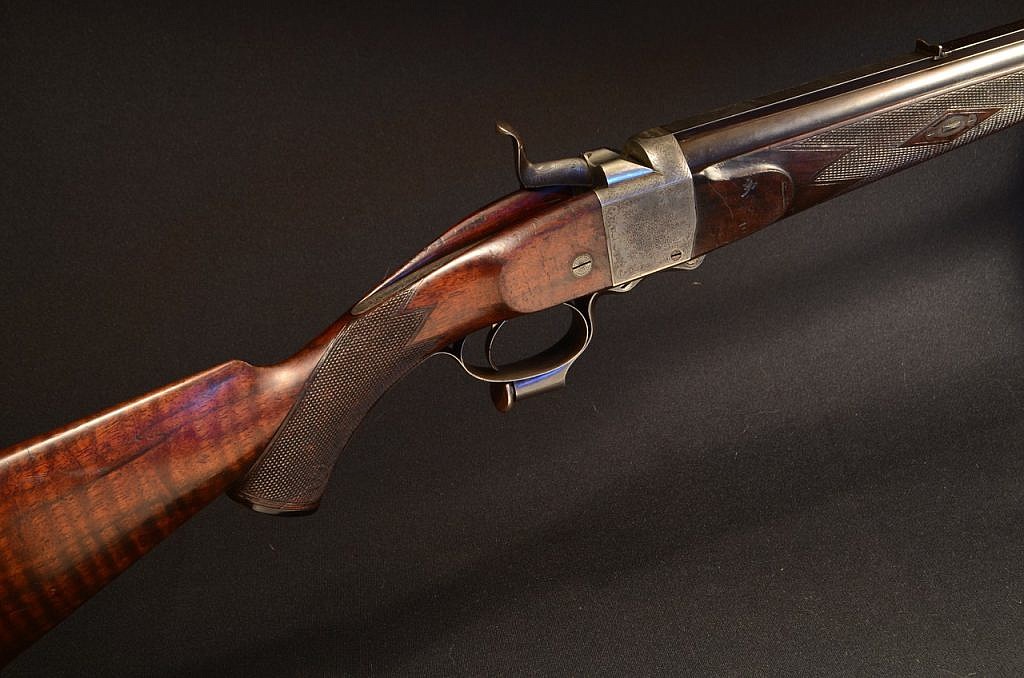
by Terry Wieland
When we think of British riflemakers, the names that usually spring to mind are Holland & Holland, John Rigby, and Westley Richards. Rarely, these days, do we hear the name Alexander Henry.
One reason for this is that the first three survived into the 20th century, and are still building rifles. All three also originated notable smokeless-powder cartridges — the .375 H&H being the preeminent one by far — and that tends to boost one’s reputation as well as keep the name in the public consciousness.
If this were 1885, however, Alexander Henry would be right up near the top, for several excellent reasons. As a gunmaker of quality, his products were second to none; as a shooter himself, he was always listed among the best; as an inventor, he had several notable patents to his name; he originated the .450 Express 3¼” cartridge, one of the finest blackpowder rounds, which later evolved into the .450 Nitro Express (by Rigby); and finally, there was Henry rifling.
This is where we are most likely to encounter the Henry name today: His rifling was used in the Martini-Henry rifle, which was adopted by the British Army in 1871, and continued in use until it was superseded by the Lee-Metford bolt action in 1888. Henry rifling was so highly regarded that he made barrels, and supplied barreled actions and even complete rifles, to most of the big names in English gunmaking.
Alexander Henry’s life, however, is almost Shakespearean in the mishaps and misfortunes that dogged him. A man of impeccable character himself, Henry seemed surrounded by friends and erstwhile colleagues intent on cheating him.

The most notorious incident concerned John Farquharson, a Scottish gamekeeper and notable rifle shot, who “designed” the falling-block action that bears his name, and become engaged in a fraught legal battle with Henry over patent infringement and theft. Henry lost the case in what is now generally considered a gross miscarriage of justice.
Essentially, Henry contended that Farquharson, a frequent visitor to his shop, had seen drawings and prototypes of a new rifle, stole the idea, and patented it. The court found otherwise, but the known facts heavily support Henry. First, Farquharson was not a gunmaker, and never had much money. Patents and patent drawings were expensive. Where did he get the financing? The likely answer is, from Bristol gunmaker George Gibbs and his partner, William Metford.
No sooner had Farquharson won the case than the pair bought the patent rights and began production of the Gibbs-Metford-Farquharson target rifle. This became one of the great English target rifles of the day, and deservedly so. But Alexander Henry must be forgiven the bitterness he felt towards all concerned.
But, he soldiered on. The lawsuit occurred in 1872. Henry then designed a new hammerless falling-block action, being careful not to infringe what was virtually his own patent, and a beautiful thing it was. For the next century, however, the Farquharson was widely regarded as the best of the British falling blocks, and when Ruger introduced its No. 1 single-shot in 1966, the Farquharson was usually mentioned as the inspiration.

For the record, John Farquharson ended up in jail, and ended his life in poverty.
In spite of the setbacks, Alexander Henry continued to gather laurels. He was graced with royal warrants, from both Queen Victoria and the Prince of Wales, as well as a dozen other European monarchs, notables, and Indian princes. He was commissioned to make the double rifle the Queen gave to her gamekeeper, John Brown, for Christmas in 1873.
Two factors combined to cause the Alexander Henry name to fade.
First, Henry did not enter the rifle trials of 1883, sponsored by The Field. This was intended to be a rigorous trial of rifles and makers to determine which, among the many conflicting claims, were actually the best. History records that Holland & Holland won all ten categories, and from that moment on was the preeminent British riflemaker.
Several prominent riflemakers did not compete, including Rigby and Westley Richards. All had plausible reasons, but the suspicion is that, knowing the prowess of H&H and its shooting-expert factory manager, William Froome, they stood to gain nothing and lose much. Whatever the real reasons, all lost in the long run. In Henry’s case, the explanation was that he was busy preparing for major exhibitions, including his largest market, Calcutta, and did not have the time.
The second factor was personal. Alexander Henry had three sons, any one of which might have been counted on to carry on the business, had any matched his father in character and gunmaking skills. The eldest, James, was killed in a dreadful shooting accident in 1860. The other two, Alick and John, showed no real interest in the business, and when their father died in 1894, immediately sold it. One ended up in jail, the other in the poorhouse.
Eventually, the name was acquired by Alexander Martin, which later merged with John Dickson & Son. The last rifle with the Alexander Henry name was produced in 1950, but by that time both the company and its reputation were but shadows of their former selves.
It was a sad note upon which to end, but the good news is that many fine Alexander Henry rifles live on, burnishing Henry’s reputation as a riflemaker every time they change hands. It’s fitting, and perhaps that is the way Alexander Henry would have preferred. At least, it’s nice to think so.
Gray’s Shooting Editor Terry Wieland is the author of Dangerous-Game Rifles and Great Hunting Rifles — Victorian to the Present. There is a space in his gun rack, waiting for an Alexander Henry rifle to come along.
